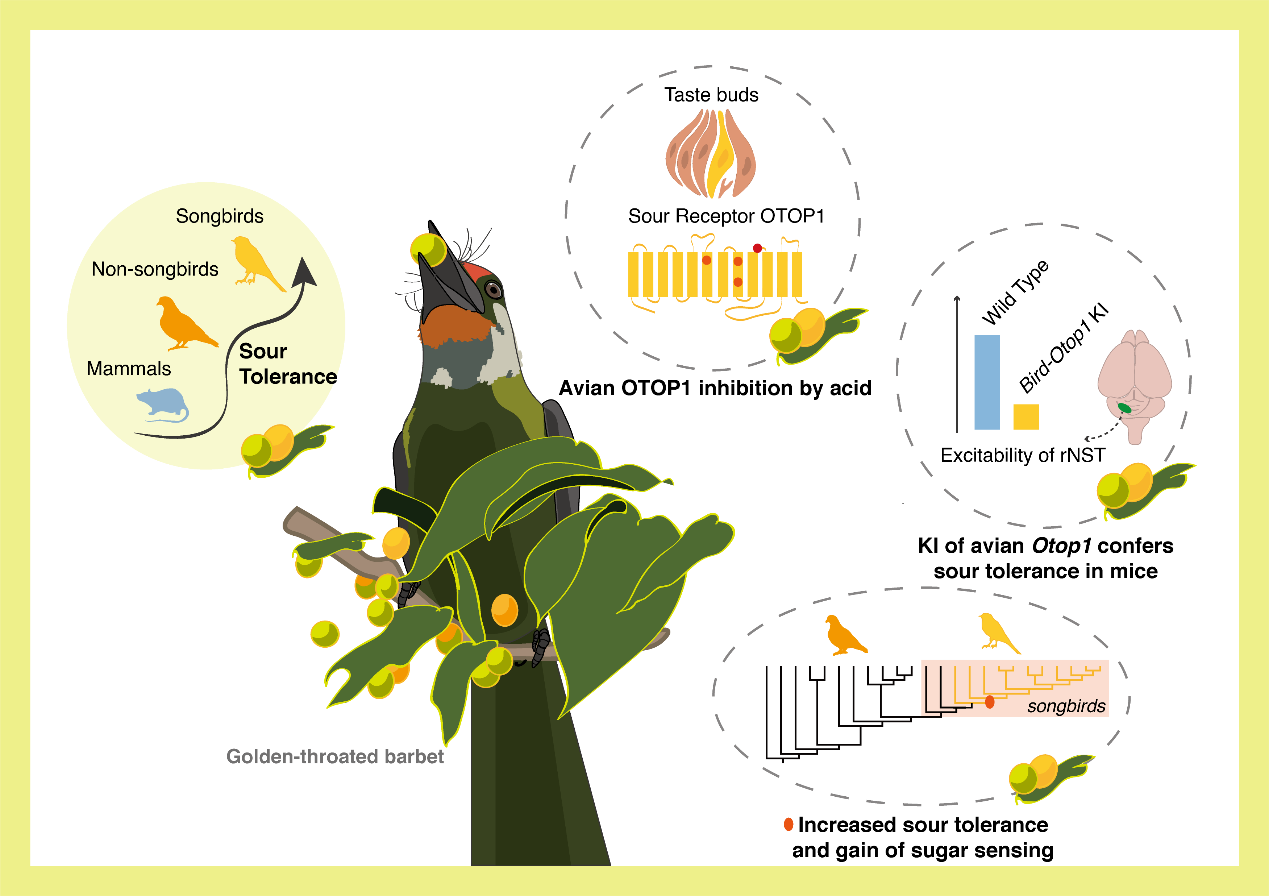Birds are the most diverse group of terrestrial vertebrates, and their rapid adaptive radiation has long been a fascinating phenomenon. The flexible adaptation to food resources and the exploitation of new food sources undoubtedly played crucial roles in avian diversification, which stems from the evolution of avian nutritional perception. Frugivory plays a crucial role in avian ecology, with most bird species relying on fruits as essential energy sources particularly during periods of food scarcity or migration. While the interaction between birds and fruits spans vast evolutionary time, how birds perceive and tolerate the high concentrations of organic acids in fruits remained unexplained.
The research team led by LAI Ren has long focused on biological survival strategies and environmental adaptation mechanisms, and has made a series of advances in understanding how organisms perceive and respond to environmental stimuli in recent years. For most mammals, sour taste serves as a warning signal, indicating potential harmful or toxic chemicals. Surprisingly, many birds can widely consume highly acidic fruits and exhibit strong tolerance to acids. The team's recent research found that avian OTOP1 is inhibited by acid at low pH, reducing the generation of sour taste nerve signals and the associated physiological responses, thus reducing the discomfort caused by the high concentration of organic acids in fruits. Knocking the OTOP1 gene of songbirds (canary) into mice significantly reduced the neural signals of sour taste in mice. Pharmacological intervention of the sour taste receptor OTOP1 significantly weakened the sour tolerance of birds (pigeons and canaries), confirming the critical role of this receptor in avian sour taste perception and sour tolerance.
Further analysis showed that songbirds, carrying an additional G378 mutation, exhibit even higher sour tolerance than other birds. Analysis of reconstructed ancestral avian sour taste receptors indicates that enhanced sour tolerance in songbirds likely co-evolved alongside the acquisition of sweet taste perception, potentially enabling dietary diversification, environmental adaptation, and the occupation of broader ecological niches.
This research demonstrates that the functional evolution of avian sour taste receptor played a key role in driving the adaptive radiation of both birds as a taxonomic class and the highly diverse songbird lineage specifically. By proposing a novel hypothesis of co-evolution dynamics between sour tolerance and sweet taste perception in songbirds, this work significantly deepens our understanding of avian radiative evolution and provides new insights into how sensory receptor functional evolution drives avian adaptation and ecological success.

Figure: The mechanism of environmental adaptation mediated by the evolution of the sour taste perception function in birds. (Create by ZHANG Hao)
Contact:
Dr. ZHANG Hao
Kunming Institute of Zoology, Chinese Academy of Sciences,
Kunming, Yunnan 650201, China
E-mail: zhanghao@mail.kiz.ac.cn
